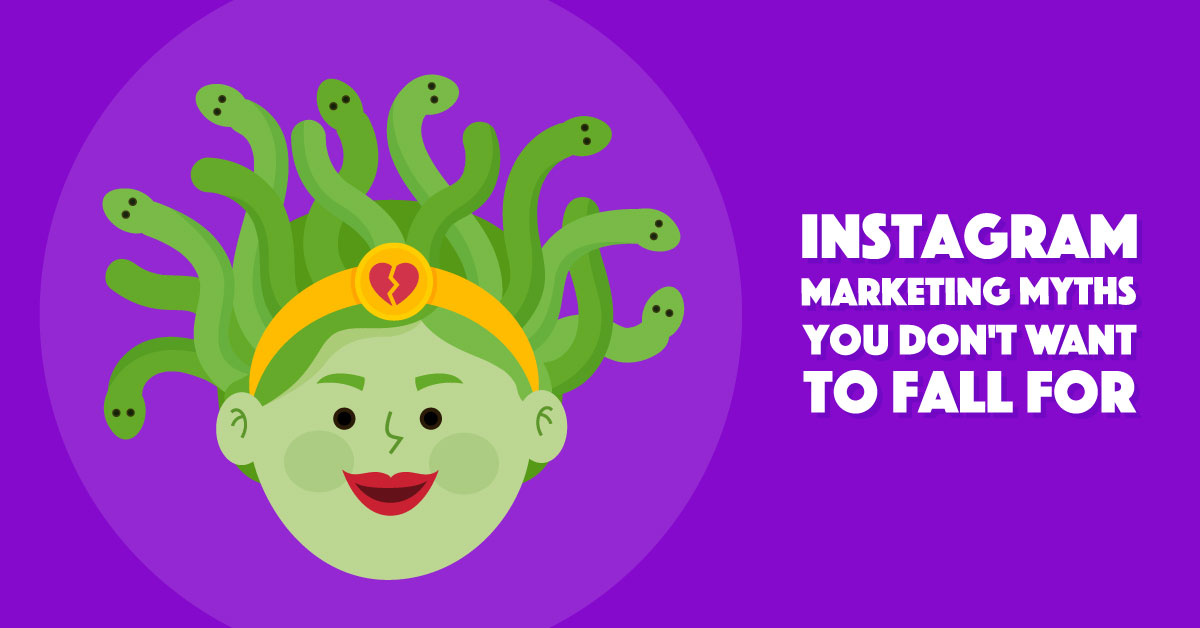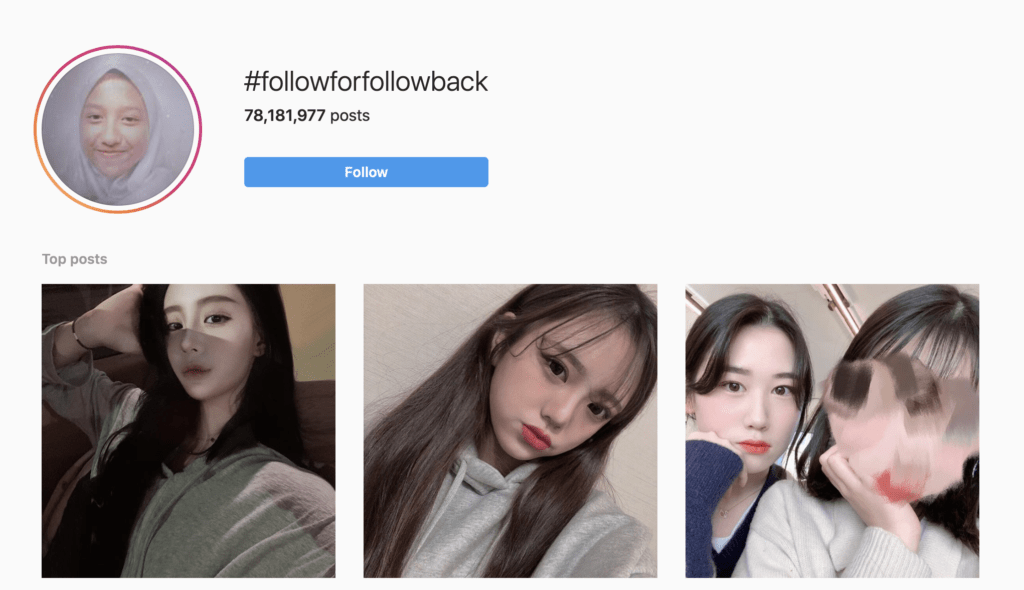Instagram marketing myths may have some grain of truth to them or come from a simple misunderstanding.
In some cases, the myths are downright false and promoted by those who claim to know more about the platform than they really do.
The last thing we want is for your campaigns to be unintentionally sabotaged by wrong info.
So in this post, we’re going to take a look at the 8 most common and serious Instagram marketing myths we see pop up again and again, and we’ll go over what’s actually true instead.
Instagram has taken center stage as one of the most important social media platforms for brands of all kinds. It has high engagement rates, and users are actively looking to connect with, follow, and even shop from businesses on Instagram, making it a powerful social juggernaut.
Brands are increasingly flocking to the platform and quickly looking for new ways to stay competitive and engage with potential and existing followers alike.
There’s plenty of great information available online about how exactly you can do that (and we pride ourselves on publishing some of it here!).
Unfortunately, however, just as there’s great, reputable information available online, there’s also a lot of misinformation floating around, too.
8 Instagram Marketing Myths Debunked
Here are some Instagram myths that simply aren’t true. Don’t let them hold your business back from getting the highest engagement on the platform. Simply said: Stop believing them!
Myth #1. Likes Won’t Matter Any More
We’ve known for awhile that Instagram started testing a version of the app that removed the like counter from posts. Users could still like each other’s content, and the owner of the posts could see who liked it, but no one else could.
This text has been expanding to more locations, making it increasingly likely that this may become a more permanent change. Because of this, some people have started to believe that likes won’t matter anymore.
That’s not true for a number of reasons:
- Likes will still help you gauge the relevance of your content to your target audience. More likes mean you’re doing something right.
- Likes are still factored in as engagement, which is a crucial part of Instagram’s algorithm that determines how high your content will appear in newsfeeds. Just because they aren’t visible to others doesn’t mean they don’t matter.
- Likes will still be a good base for potential retargeting in ad campaigns; you can create ad campaigns based on who has recently engaged with a post.
The only thing that will be affected by the removal of visible likes will be social proof.
That is unfortunate —social proof is plenty powerful– but comments have always been more influential in that domain anyways.
Try to use engagement-oriented strategies to get more comments moving forward to make up for the lack of visible likes if and when the time comes.
Myth #2. Stories Can’t Sell
Instagram Stories have come a long way since they were first rolled out a few years ago, and some people have missed a few of the updates. That definitely seems to be the case for those who are saying that Stories are only effective for brand awareness and that they won’t actually drive sales.
Stories are great for brand awareness and relationship building. I won’t disagree there.
But the idea that Stories aren’t effective selling tools is downright incorrect, making it number 2 on our list of Instagram marketing myths.
First, brands with 10,000 followers can add “Swipe Up” CTAs that allow users to see and click through clickable links to an off-platform site, where they can learn more about your products and make purchases.
Story Ads– which are run through Facebook and Instagram’s ad platform– always include these links if you choose to attach them.
Even outside of these features that can drive sales on their own, we also now have Shopping features on Stories.
Brands can tag products on their images and videos in Stories, allowing users to click to learn more and then click again to navigate to a site where they can purchase. Shopping on Instagram has been incredibly successful at driving sales that the brand may not have gotten otherwise.
So go ahead. Leverage those Stories to the fullest, and optimize for sales if you want. The results will speak for themselves.
Myth #3. Follower Count Reigns Supreme
Some brands clearly believe that an enormous follower count is what they should be focused on when it comes to Instagram marketing.
Unless you’re trying to become an Instagram influencer who makes a living by shilling sponsored products, that’s not the case.
Follower count does matter; the more people who are following you, the more you can hopefully reach on a regular basis, which is a huge asset. It also signals interest in your account and brand, and it does act as social proof.
But your follower count isn’t the most important metric on Instagram. Your engagement rate is.
Your engagement rate (which is found by calculating the number of engagements you receive divided by EITHER the number of people who saw it OR your total followers, depending on who you ask) is crucial.
Your engagement rate will tell you how many of your followers are actually engaged with your content, and it’s used by Instagram’s algorithm to assess your content and how it should fall in the newsfeed placements.
This is one reason, for the record, why you should never buy followers. Those accounts are fake, and no one is using those profiles. Your follower count will be boosted, but your engagement rate will plummet.
In the meantime, don’t sweat it if your follower count is growing a little slower than you’d like. You can use visibility-boosting strategies like hosting contests and using more hashtags, but focus on engaging the audience you have already, too.
Myth #4. The Algorithm Will Destroy Business’s Marketing Potential
I get where this myth comes from.
We’re all wary about Facebook’s hack job on organic reach for business Pages, so when business accounts for Instagram rolled out, everyone was worried they’d automatically be penalized when it came to visibility.
That being said, as of right now, Instagram is a pretty fair player for personal, business, and creator accounts.
In 2019, Instagram even cleared this up, mentioning that what matters is the accounts users are engaging with most; the “status” of the account was irrelevant.

Business accounts like William Sonoma are always towards the top of my newsfeed.
Could this change eventually? Of course, there’s always that chance.
In the meantime, though, Instagram has no real reason to do this. Brands are happily marketing here with high visibility, and this benefits users, too.
Instagram’s users, after all, are more likely to engage with brands on Instagram than other platforms, and actively seek them out. Reducing the reach of business accounts just doesn’t make sense at this point.
Myth #5. Hashtags: The Fewer the Better
This is one Instagram marketing myth that baffles me, because I’m not really sure where it came from.
My best guess is that people saw that Twitter’s best practices stated that you shouldn’t use more than two hashtags per post and thought it must apply to Instagram as well.
But nope. This one is a myth, too, of course.
You aren’t restricted to a short character count on Instagram like you are on Twitter; there’s a lot more room to play here. You can also bury any reach-oriented hashtags under the “read more” tag at the bottom of your post, separating it with a few space lines to be safe.
You can add up to 30 hashtags on Instagram.
Some studies show that 9-11 seems to be the sweet spot maximizes engagement and reach, but others say to go full steam ahead and use the full 30 if you want.
If you’re struggling to come up with a solid list of hashtags (and even if you aren’t), you can use hashtag research tools like Hashtagify and RiteTag. Both will help you come up with new ideas for hashtags that you can use, and can offer insight into their popularity and potential performance.
No matter what you choose, remember to do two things: Test your strategies, and shake up the hashtags that you use.
By incorporating new hashtags on each post, you’ll have more luck reaching new audience members since you may show up in more feeds.
Still, feeling baffled by Instagram’s hashtags? Check out our full guide on the subject here.
Myth #6. Third-Party Tools Won’t Cut It
Instagram historically had a pretty restricted API, making it hard for third-party tools to really branch out and create software that worked with the platform. This is why for the longest time, social media publishing tools like Hootsuite would require that you schedule a post, and would then receive a push notification in the mobile app which would allow you to copy and paste a post. You’d then need to post it manually to Instagram.
This is no longer the case.
Instagram started rolling out access to their API a few years back, which is why full scheduling and publishing features are now available with tools like Hootsuite.
https://www.youtube.com/watch?v=erRmOpzYHQw
There are other third-party tools that can be useful for Instagram, too. ShortStack and WishPond, for example, both have great Instagram contest platforms that you should definitely check out, and Repost for Instagram makes it easy to actually share others’ posts (including UGC) on the platform.
One note: Make sure that when you’re looking at third-party tools, you double-check Instagram’s usage guidelines.
If you’re using a reposting or sharing tool, for example, Instagram’s guidelines state that you need permission from the original creator to share. Knowing the rules will help you stay in good standing with everyone, and can help you avoid tools that inherently violate those guidelines.
Myth #7. Follow for Follow Works
There’s a common “growth” strategy that you see all over Instagram and social platforms like Twitter that’s called “follow for follow.”
The idea is that everyone wants followers, so you scratch my back and I scratch yours. People will even attach “#followforfollow” to their profile or their posts in hopes of attracting fellow follower-count-climbers.
This strategy is most often used by brands who are newer to Instagram and want to grow their follower count quickly.
They start following accounts almost without abandon, including influencers and other businesses along with anyone else they happen to come across. Then, once people follow back, they’ll sometimes unfollow them later.
Here’s the thing: Follow for Follow can sometimes appear to work, but it often backfires. If you unfollow people, they’ll eventually catch on and delete you, too.
In addition, while you may have a seemingly rapidly growing follower count, it’s an illusion.
These aren’t members of your target audience, and they almost certainly won’t care about what you’re doing; they just care about their own followers. They’re not likely to engage with your content, driving your engagement rates down, and hurting you in the algorithms.
It’s not entirely dissimilar from buying fake followers. Don’t do this, and focus on organic growth building and PPC campaigns instead.
Myth #8. I Need to Post Constantly to See Results
Last but not least, we have the Instagram marketing myth that states that you need to post content multiple times every day just to see results. This is not true.
Quality over quantity will always be true with social media. There’s no need to post more than twice per week if you don’t have something truly spectacular to share in the feeds.
You want to give people the chance to see and engage with your last post before flooding them with three more. In most cases, it’s best not to post more than once per day, and there’s no obligation to post daily.
Make sure that your content calendar is full, but it doesn’t have to be stuffed to the brim.
Stories are the exception here.
You can go full steam ahead with Stories, uploading as many as you want on a daily basis. Users love those, and this is the place for quirky content that’s not fully edited to perfection.
Final Thoughts: How to Spot Instagram Marketing Myths in the Future
We run across these Instagram marketing myths more often than you’d think. Some are even considered “common knowledge” in certain forums or blog posts, even though they’re full of nothing but blatant misinformation.
And while these 8 Instagram marketing myths are the most common now, there will be more as the platform continues to evolve.
Always double-check the sources of the claims, and feel free to check back in at our blog for the latest and most reliable information.
We’re all about getting you the right information you need the first time.
What do you think? Have you heard of any of these Instagram marketing myths before? Which one do you think is most prevalent, and have you heard of any others that didn’t make our list? Share your thoughts and questions in the comments below!






Spectacular article. I must admit that a lot of those things which you said in your post like “Likes won’t matter”, “Post multiple times a day” “Following everyone who follows you” are absolutely myths and are being practiced by many brands and influencers.